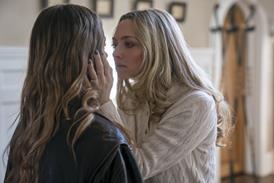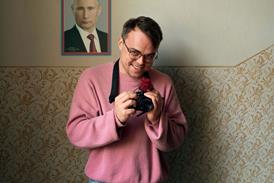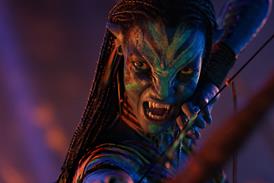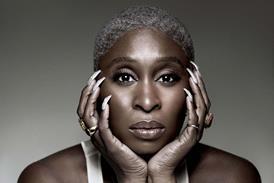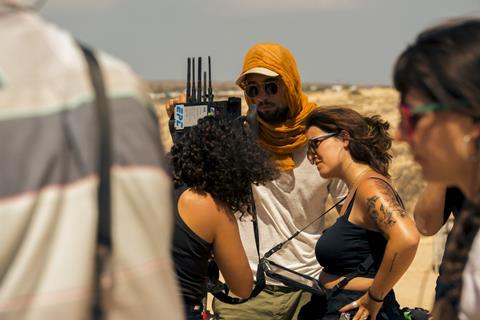
First-time feature filmmaker Stuart Gatt, London born and raised, admits to causing consternation amongst his peers when he wrote Catching Dust, a film set in West Texas populated with American talent.
Based on his own original script, the thriller follows a criminal husband and frustrated artist wife whose fractious hideout in the remote desert is disrupted by the surprise arrival of a hipster couple from New York City, who are running from problems of their own. The tension, secrets and relationship cracks widen against the backdrop of the desert. Erin Moriarty, Jai Courtney, Dina Shihabi and Ryan Corr star.
Following extensive scouting of the Big Bend, Texas and the deserts of Nevada, Gatt ended up shooting his film in Fuerteventura in the Canary Islands; the same island on which Hans Solo: A Star Wars Story shot in 2017. The film was financed with private equity and utilised both the Canary Islands tax rebate and U.K. tax credit. It is produced by Gatt, London based producer Mark David — Gatt’s collaborator for his award-winning short The Dead Sea — Jon Katz of documentary feature Dear Mr. Brody and the late Ed R. Pressman.
Catching Dust debuted at the Tribeca Film Festival 2023 and is screening during this year’s Raindance Film Festival in London (October 23 - Nov 4)
Why make your directorial debut with this particular story?
I became interested with the idea of a character desperately trying to understand their place in the world while being completely isolated from it. It felt like a poignant allegory for modern society, where we feel so connected via technology but, paradoxically, are more isolated than any time in human history. The key themes of the story, female liberation and toxic masculinity, are ones that are very close to me and very often feature in my films, likely due to my childhood. In many ways, exploring them artistically offers a cathartic outlet that is incredibly motivating.
How did the film come together?
I worked with producer Mark David on my last short film, The Dead Sea, and we committed to developing a feature film together. Once the screenplay for Catching Dust was completed, Mark presented it to Jon Katz who really responded to the material and wanted to produce it. Jon was working with Ed Pressman at the time which was an exciting prospect for me as he’d made such iconic films such as Badlands, American Psycho and Wall Street. Catching Dust ultimately became one of Ed’s last films.
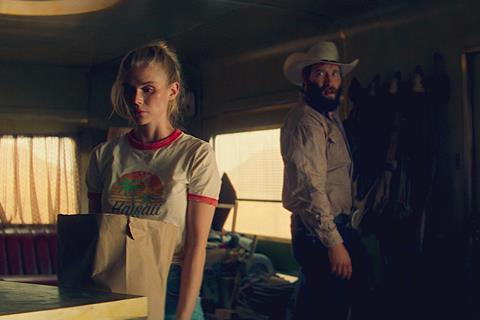
How did you cast it, and what was your directorial approach?
We worked with US casting director Kerry Barden (Dallas Buyers Club, Spotlight) and had a number of auditions and meetings. It’s always one of the great mysteries with casting but as soon as I met with Erin, Jai, Dina and Ryan I knew within a few minutes they were perfect for the roles. I believe it begins and ends with the actors, My goal ultimately was to create an environment where they felt they could operate at their best, be totally immersed in the world of the story and feel the confidence to experiment and play.
One of my biggest lessons from this film, being my feature debut, was that I needed to adapt to the approach of my actors, rather than force them into an approach that suited me. They all had totally different methodologies.
What was the most challenging part of the shoot?
Shooting on 35mm film on an island with no lab! Most people thought I was insane to insist on the format due to the complexity it required to process cross-border. We were required to ship film every few days to Kodak London and keep our fingers crossed when we saw the footage a day later. Luckily, we never had an issue.
How did you find the step up to features from shorts
The way your attention is required by multiple people from the moment you open your eyes until the moment you close them with important questions that require answers with massive implications if miscalculated. You have to be ‘on’ every second of every minute of every day.
Another definite culture shock was having access to a larger, more experienced crews, greater resources and longer schedules that allowed me to really develop the story world, explore every and all ideas and truly maximise the potential of the film in a way you can’t with short films.
Who would you like to work with in the future?
As someone who is half Indian, I’d be keen to bring more Desi representation to screen, particularly from the south of India, where my mother is from, as well more Native American representation on screen.







